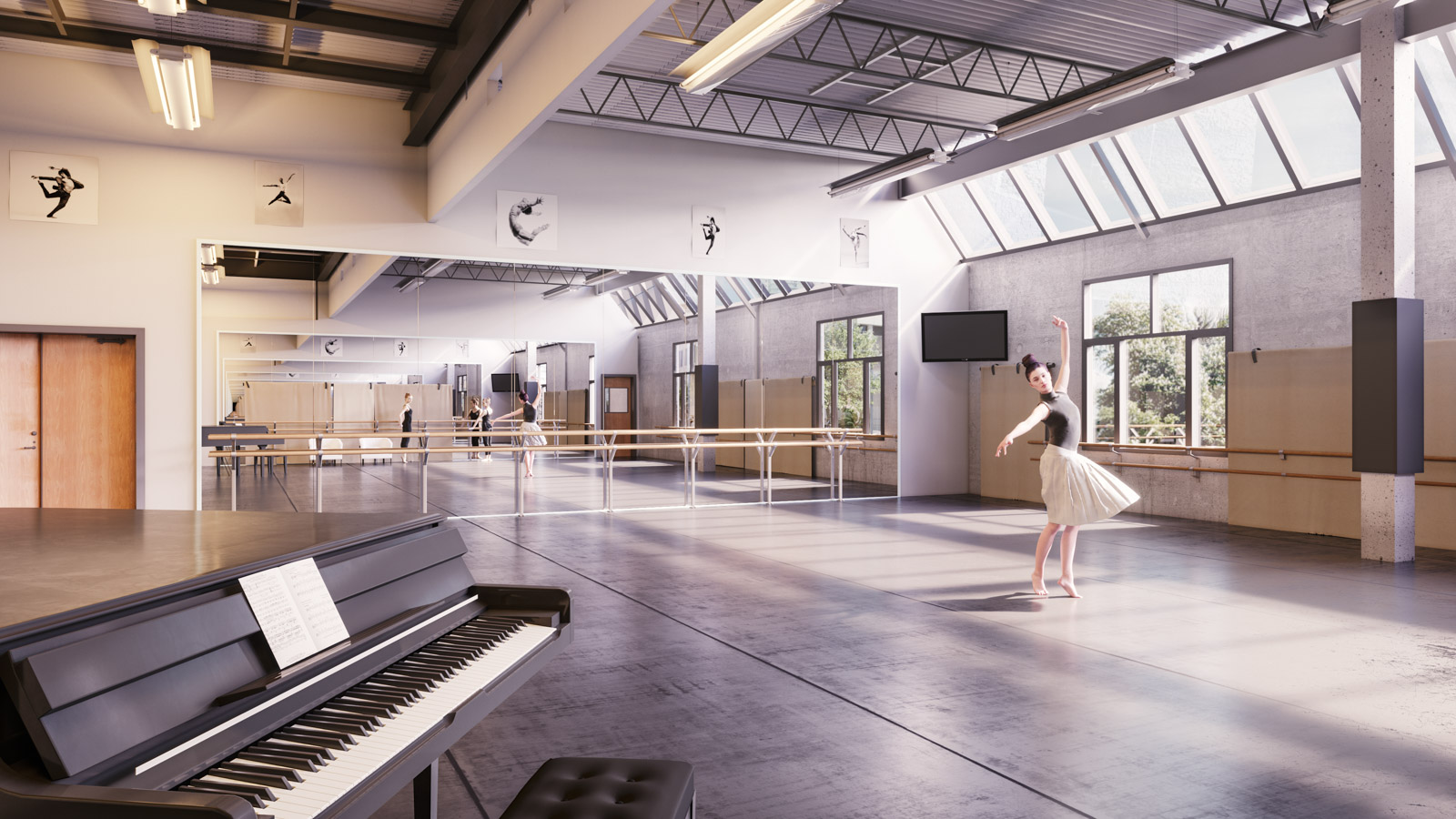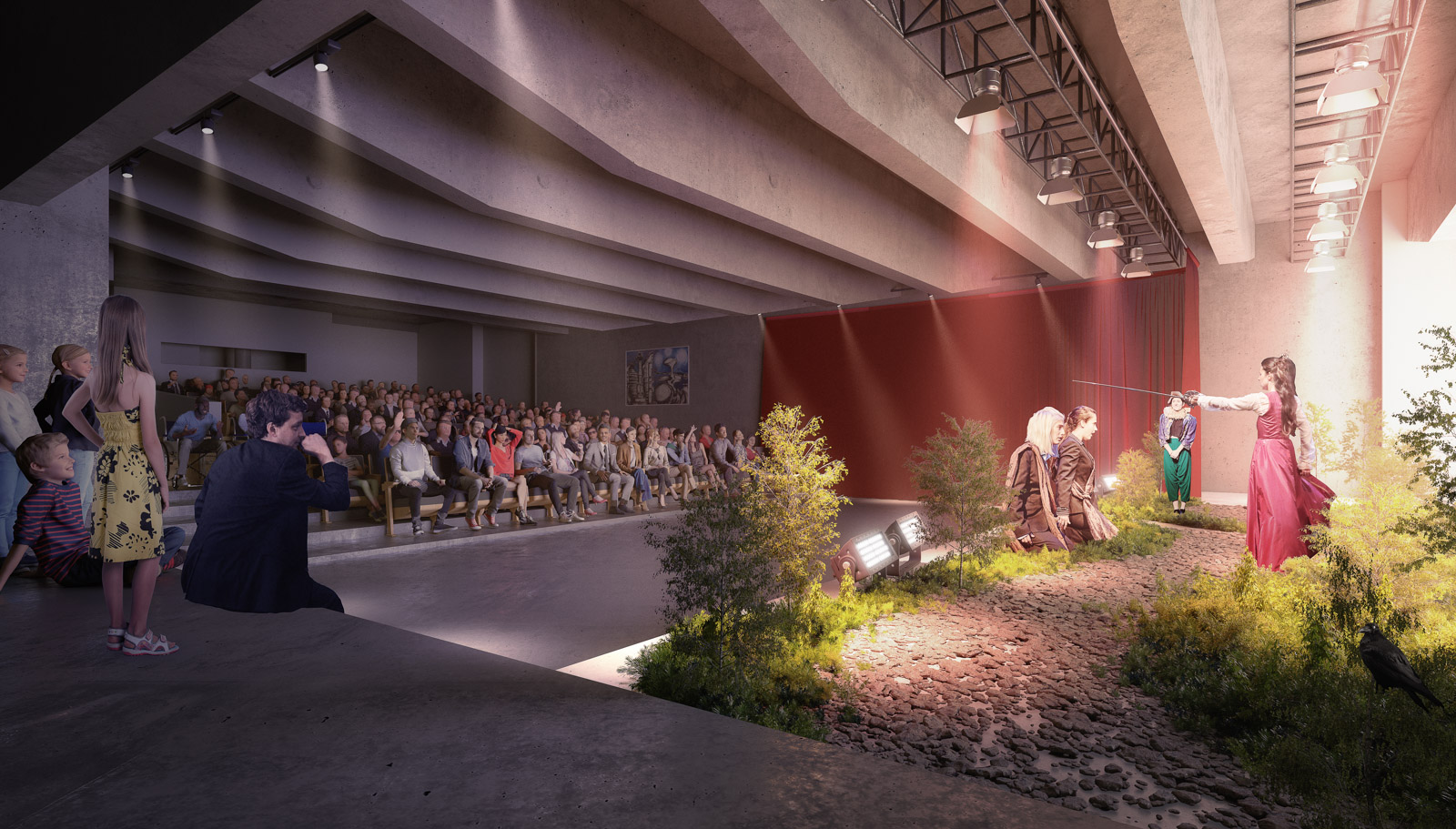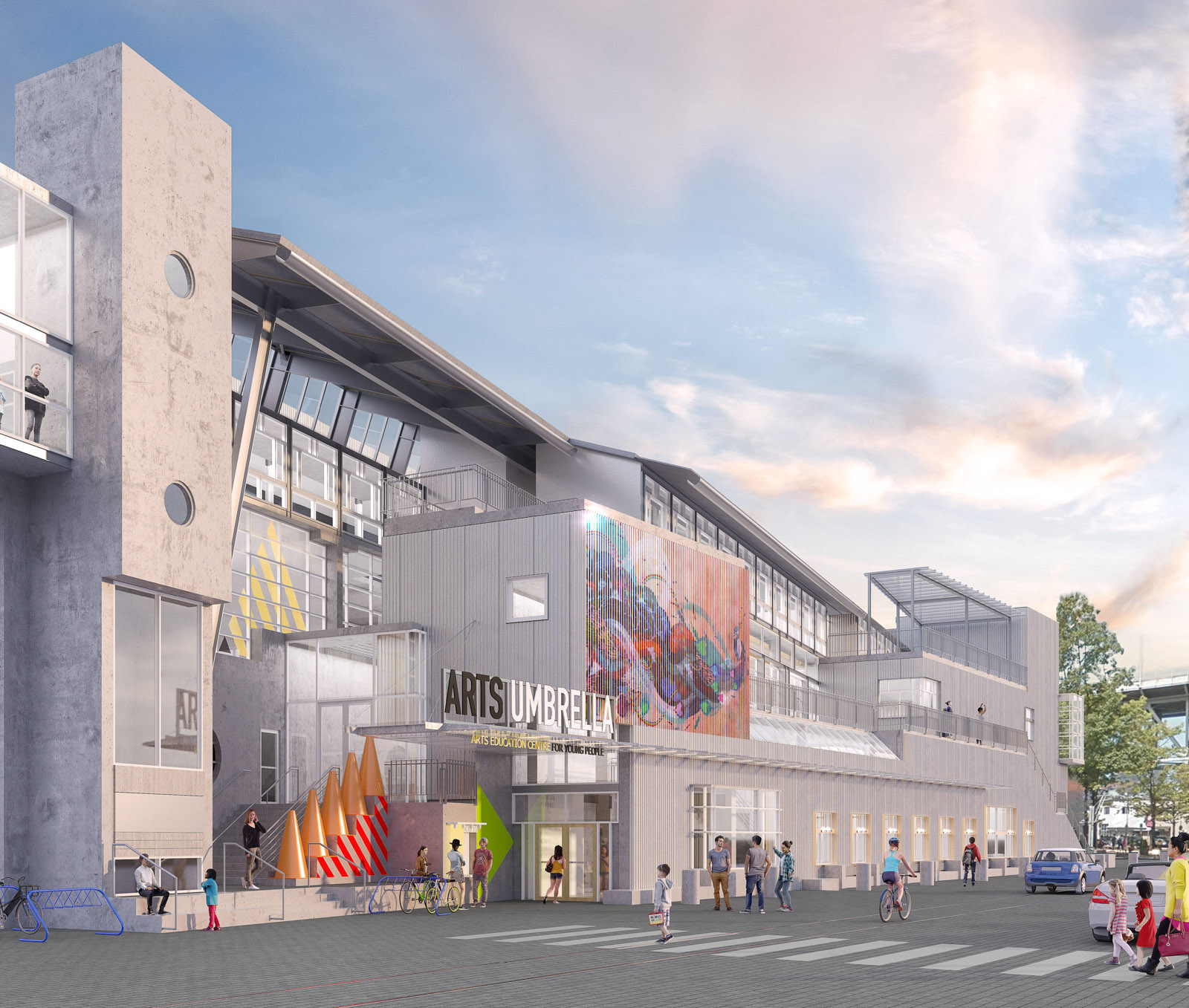In the past five years since I took on the leadership of Arts Umbrella, what stands out most are moments in our studios. There is a magical connection between our dedicated instructors and their students. I have witnessed the glances between students as they rehearse their lines, discovering new meaning in the words they recite; the concentration on a child’s face as brush hits paper, sending the image in their mind out into the world; the way a dancer’s movements change as they go beyond the choreography to truly be in the moment.
In the mid-’90s when I first joined Arts Umbrella, the organization was smaller, but it had already built a nationwide reputation for excellence and community impact. We believe all children should have access to a high-quality arts education, and over the last 41 years, we have served more than half a million young people, with a great many students benefiting from donor-funded community programs, bursaries, and scholarships.
The urgent need for more space has been a significant conversation among the staff and board for several years. In 2013, Emily Carr University of Art + Design announced its decision to move to Great Northern Way, and I believe we were the first to inquire about touring its South Building on Granville Island.
For many years, Arts Umbrella has pushed at the boundaries of its original building. The memories created in the 1930s former nail factory will remain with us forever, but growth has long been inhibited by the 14,000-square-foot space. Granville Island has been our home since 1979, when co-founders Carol Henriquez and Gloria Schwartz walked the island with other artists and arts organizations to select their new locations and help transform a former industrial landscape into an arts and culture hub. Many are still creating and sharing their work on Granville Island today.
Within days of touring the building back in 2016, we met with contacts at Canadian Heritage and the provincial government, people who championed this building project early on. We also needed to bring in experts to help imagine how Arts Umbrella could make the building work for all of our artistic disciplines. Originally designed by Patkau Architects, it is being repurposed for Arts Umbrella programs by Richard Henriquez of Henriquez Partners Architects.

Arts Umbrella teaches both the visual and performing arts, including art and design, dance, theatre, music, and film. Adjustments to the existing building were necessary, and we had to consider how best to incorporate studio, exhibition, and performance spaces for all disciplines. Load-bearing columns that rose through to the fourth floor made our vision for large dance studios almost impossible. The theatre had a small lecture stage, a space that needed to expand significantly to accommodate theatre and dance performances. Every visual art studio required sinks where no pipes yet existed. A team of leading consultants came together to solve these challenges.
I have always said that Arts Umbrella is built by our community for our community, and this project has also received extraordinary support from across the country. It has been awe-inspiring to see such a caring group of individuals, corporations, foundations, and governments come together at precisely the moment we were in need. We all see the importance of this project to future generations, and I believe this example of philanthropy is a model that will inspire other communities across the country and around the world.
As we prepare to open the doors to this new building in April, I am even more excited to look into our new studios and witness the wonder crossing each young person’s face. I look forward to seeing inspiration and collaboration across all ages and artistic disciplines under one roof.

Our new home is mere steps away from where we set down roots, but at 50,000 square feet, it more than triples our space, providing a much-needed canvas for expanding opportunities for children and youth. Our new facility will reach approximately 15,000 students in our first three to five years, through tuition-based programs and performances, as well as donor-funded community programs, distance learning, bursaries, and scholarships. To be able to stay on Granville Island, where we have flourished, allows us to remain connected to such a special place.
This story is from our Spring 2021 issue. Read more local Arts stories.









